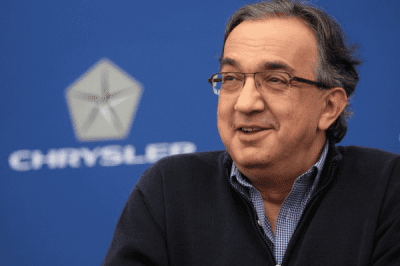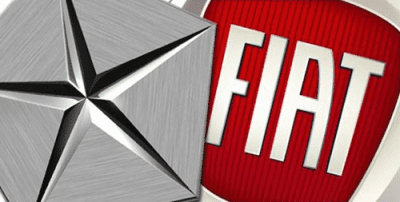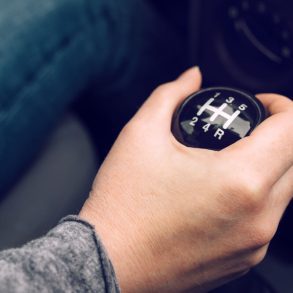 With GM CEO Dan Akerson stepping down next January to make room for Mary Barra, the first female CEO of a global automaker ever, General Motors no longer has a “change agent” at the helm, but a “car-girl” instead. Akerson has long said that he was not a long-term man for the job, and that he was in the position to turn GM around after the bankruptcy and would step down as soon as he felt the company would be prepared enough for the future, to leave General Motors in the hands of a leader who would take the company to the next level.
With GM CEO Dan Akerson stepping down next January to make room for Mary Barra, the first female CEO of a global automaker ever, General Motors no longer has a “change agent” at the helm, but a “car-girl” instead. Akerson has long said that he was not a long-term man for the job, and that he was in the position to turn GM around after the bankruptcy and would step down as soon as he felt the company would be prepared enough for the future, to leave General Motors in the hands of a leader who would take the company to the next level.
Meanwhile, at Fiat-Chrysler, a change-agent is still in charge with CEO Sergio Marchionne in the triple role of CEO of Fiat, Chairman and CEO of Chrysler Group, and Chairman of Fiat Industrial. Marchionne is credited for saving Fiat and then taking over the bankrupt Chrysler and saving this too. Both times, he managed to take the company from (near) bankruptcy to profitability within 2 years time. He is a true “company doctor”, so why didn’t he step down when Fiat was profitable again and leave the management to a leader who is specialized in running an already healthy company? And why is he still in charge of Chrysler now that it’s back on track?
Marchionne saved Fiat, but then?
As a change-agent at Fiat, he greatly improved manufacturing quality, reduced bureaucracy and inefficiencies, and the move he pulled on General Motors in 2005 was legendary, prying a $2 billion settlement out of GM, when the Americans were afraid to call his bluff about whether he’d force them to make good on their option to buy the struggling Italian automaker.
But after returning to profitability in 2006, Fiat has been losing money again since 2012, it has lost 40% of its volume in Europe from 2009-2013, down almost 500.000 units, because of lack of new successful products. Alfa Romeo and Lancia are still problem children, Marchionne has recently announced his fourth (!) new revival plan for Alfa Romeo since 2004, but there are still no new volume products on the market, while Lancia has been degraded to rebadging Chryslers.
Taking over Chrysler
 Then in 2009 he pulled another great move, convincing the US government, who had bailed out Chrysler, that he would not pay a dime to take over Chrysler. Again, he improved manufacturing and interior quality, reduced inefficiencies and got the company back into profitability quickly thanks to 44 consecutive months (and running) of increased sales in North America. Now that Chrysler is running smoothly, it may be the right time to hand over control to one of his protégés, like Dan Akerson has done at GM. Reid Bigland, currently CEO of Chrysler Canada, Chrysler Group head of U.S. sales and CEO of RAM, is a car guy with the right experience and background for the job at Chrysler, while Olivier Francois, currently head of Fiat brand and Chrysler Group Chief Marketing Officer looks like the right guy to run Fiat.
Then in 2009 he pulled another great move, convincing the US government, who had bailed out Chrysler, that he would not pay a dime to take over Chrysler. Again, he improved manufacturing and interior quality, reduced inefficiencies and got the company back into profitability quickly thanks to 44 consecutive months (and running) of increased sales in North America. Now that Chrysler is running smoothly, it may be the right time to hand over control to one of his protégés, like Dan Akerson has done at GM. Reid Bigland, currently CEO of Chrysler Canada, Chrysler Group head of U.S. sales and CEO of RAM, is a car guy with the right experience and background for the job at Chrysler, while Olivier Francois, currently head of Fiat brand and Chrysler Group Chief Marketing Officer looks like the right guy to run Fiat.
 Marchionne was the right man at the right time in the right place for both Fiat and Chrysler: a change-agent with a background in finance and a great strategist with a somewhat authoritarian leadership style. But what Fiat and Chrysler now need, is a car-guy (or girl) in charge, who can move each company forward and build further on the foundations laid by Marchionne. Meanwhile, Marchionne himself can focus his attention to acquiring the remaining stake of Chrysler and fully integrating both automakers. When that task is done, he can move on to save another troubled company, not necessarily a car company, since he’s an accountant first and car-guy second.
Marchionne was the right man at the right time in the right place for both Fiat and Chrysler: a change-agent with a background in finance and a great strategist with a somewhat authoritarian leadership style. But what Fiat and Chrysler now need, is a car-guy (or girl) in charge, who can move each company forward and build further on the foundations laid by Marchionne. Meanwhile, Marchionne himself can focus his attention to acquiring the remaining stake of Chrysler and fully integrating both automakers. When that task is done, he can move on to save another troubled company, not necessarily a car company, since he’s an accountant first and car-guy second.








